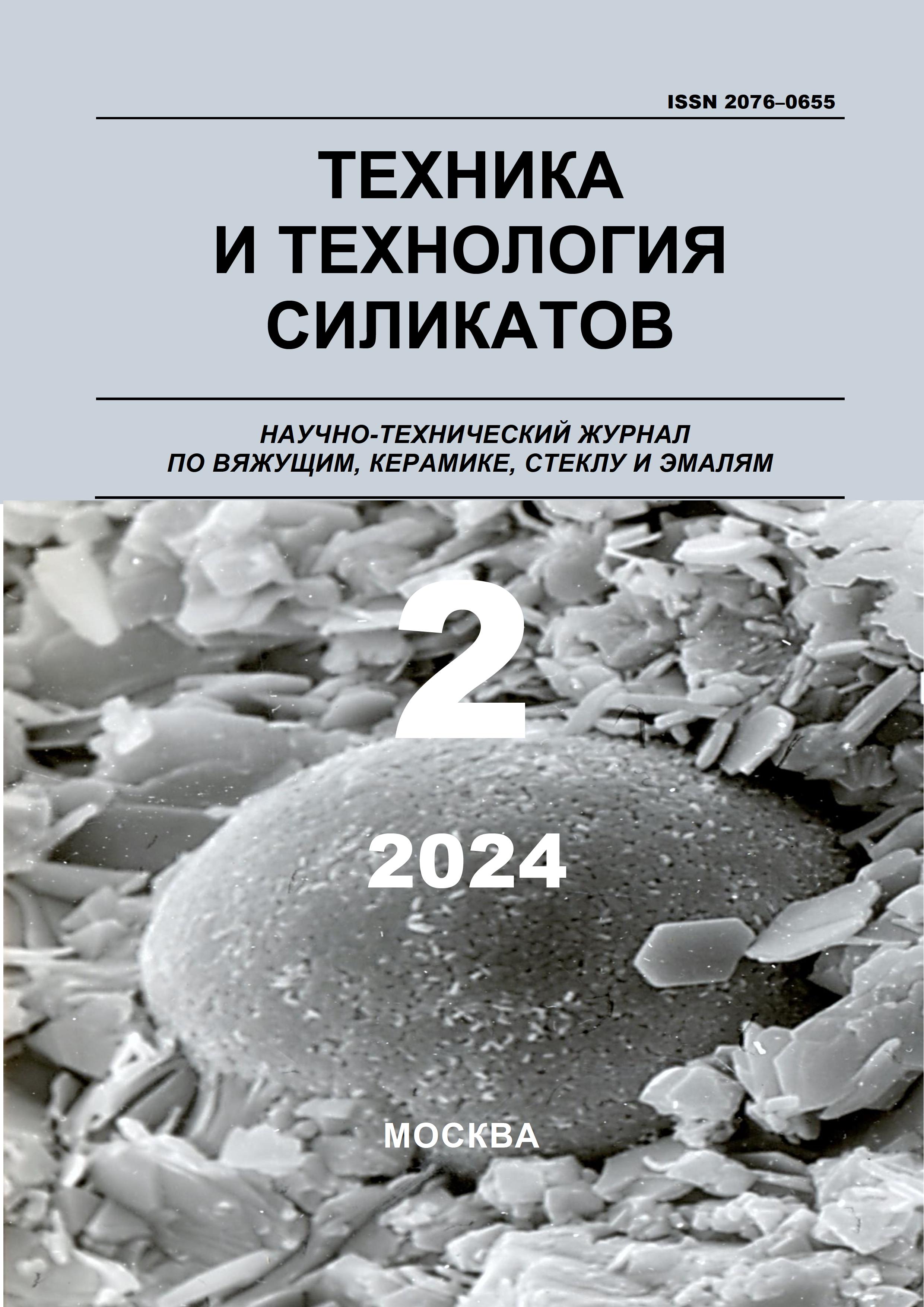employee
Moscow, Moscow, Russian Federation
student
Moscow, Moscow, Russian Federation
UDC 666.1.002.67
UDC 666.1.002.68
CSCSTI 61.35
To date, the issue of handling toxic unsorted waste of cathode ray tubes (CRT) glass cullet remains relevant. The present paper proposes to replace part of the fine aggregate of cellular concrete intended for sound, heat or radiation protection with CRT glass waste heat-treated in the presence of a sodium hydroxide solution. The purpose of the research is to study the structure formation of the cellular concrete pores in case of replacement of part of the aggregate. The microscopy of the samples fracture was studied both visually and using software that made it possible to estimate the pore size when convert-ing the image to the relief mode. The study showed that the aggregate replacement results not only in quantitative changes in pore size, but also in qualitative changes related to the mechanism of the pore structure formation. Thus, when adding unsorted waste heat-treated in an alkaline environment, with a particle diameter of no more than 630 μm, there was a decrease in pore size and a decrease in size distribution compared with the reference sample. The changes are caused by structure formation, which can be divided into two stages - the formation of conglomerates and their swelling. With a decrease in the diameter of the part of the waste of a maximum size of 90 μm, a decrease in the pore size was recorded compared to the reference value, but due to the concrete skeleton formation before the end of gas development, destruction of the pore walls was observed.
cellular concrete, glass cullet, cathode ray tube, pore structure, kinescope waste
1. Murph D. Worldwide LCD TV shipments surpass CRTs for first time ever / engadget HD. − 2008. URL: https://www.engadget.com/2008-02-19-worldwide-lcd-tv-shipments-surpass-crts-for-first-time-ever.html
2. Singh N., Li J., Zeng X. Solutions and challenges in recycling waste cathode-ray tubes // Journal of Cleaner Production. − 2016. Vol. 133. − P. 188-200. DOI: doi.org/10.1016/j.jclepro.2016.04.132.
3. Dushkina M.A., Kaz'mina O.V. Vliyanie zhelezosoderzhaschih dobavok na process polucheniya penosteklokristallicheskih materialov // Himiya i himicheskaya tehnologiya. − 2014. №57. Vyp. 11. − S. 54-57.
4. Soliman N.A., Tagnit-Hamou A. Using glass sand as an alternative for quartz sand in UHPC // Construction and Building Materials. − 2017. Vol. 145. − P. 243-252. DOI: doi.org/10.1016/j.conbuildmat.2017.03.187.
5. Diego R., Jacqueline J., Rodrigo M., Carol D. H. Study on the mechanical and environmental properties of concrete containing cathode ray tube glass aggregate // Waste Management. − 2013.Volume 33, Issue 7, − P. 1659-1666. DOI: doi.org/10.1016/j.wasman.2013.03.018.
6. Narendra S., Jinhui L., Xianlai Z. Solutions and challenges in recycling waste cathode-ray tubes // Journal of Cleaner Production. – 2016. Vol. 133. − P. 188-200. DOI: doi.org/10.1016/j.jclepro.2016.04.132.
7. Samchenko S.V., Bruyako M.G., Novikov N.V. Radiacionno-zaschitnyy stroitel'nyy blok iz yacheistogo betona s peremennoy plotnost'yu//Patent Rossii №RU219191U1.2023. Byul.№19.
8. Samchenko S.V., Novikov N.V., Okol'nikova G.E. Baritosoderzhaschie radiacionno-zaschitnye stroitel'nye materialy // Vestnik RUDN. Seriya: Inzhenernye nauki. − 2020. T.21. № 1. − S.94-98.
9. Samchenko, S.V.; Korshunov, A.V. Formation of cellular concrete structures based on waste glass and liquid glass // Buildings. − 2024, № 14(1), 17. DOI: doi.org/10.3390/buildings14010017
10. Zhukov A.D. Vysokoporistye materialy: struktura i teplomassoperenos. – M.: MGSU, 2014. 208 s.
11. Tiejun L., Wen S., Dujian Z., Lei L. Dynamic mechanical analysis of cement mortar prepared with recycled cathode ray tube (CRT) glass as fine aggregate // Journal of Cleaner Production. − 2018.Vol. 174. – P. 1436-1443. DOI: doi.org/10.1016/j.jclepro.2017.11.057.
12. Jian-xin L., Zhen-hua D., Chi Sun P. Combined use of waste glass powder and cullet in architectural mortar // Cement and Concrete Composites. − 2017. Vol. 82. −P. 34-44. DOI: doi.org/10.1016/j.cemconcomp.2017.05.011.
13. Jebsen-Marwedel H., Brückner R. Glastechnische Fabrikationsfehler. "Pathologische" Ausnahmezustände des Werkstoffes Glas und ihre Behebung; Eine Brücke zwischen Wissenschaft, Technologie und Praxis. Springer Berlin, Heidelberg. 2011. p. 623. DOI: doi.org/10.1007/978-3-642-16433-0.
14. Lukash E.V., Shaluho N.M., Kachurina V.S. Poluchenie i issledovanie svoystv bezvodnogo metasilikata natriya // Trudy BGTU. Seriya 2. − 2022. № 2. − S. 56-63. DOI: doi.org/10.52065/2520-2669-2022-259-2-56-63. EDN: https://elibrary.ru/ORAGCU
15. Arya U., Sabu T., Tianduo L., Hanna M. Advanced Functional Porous Materials. −Berlin: Springer Nature Switzerland AG. 2022. p. 688. doi.org/10.1007/978-3-030-85397-6









